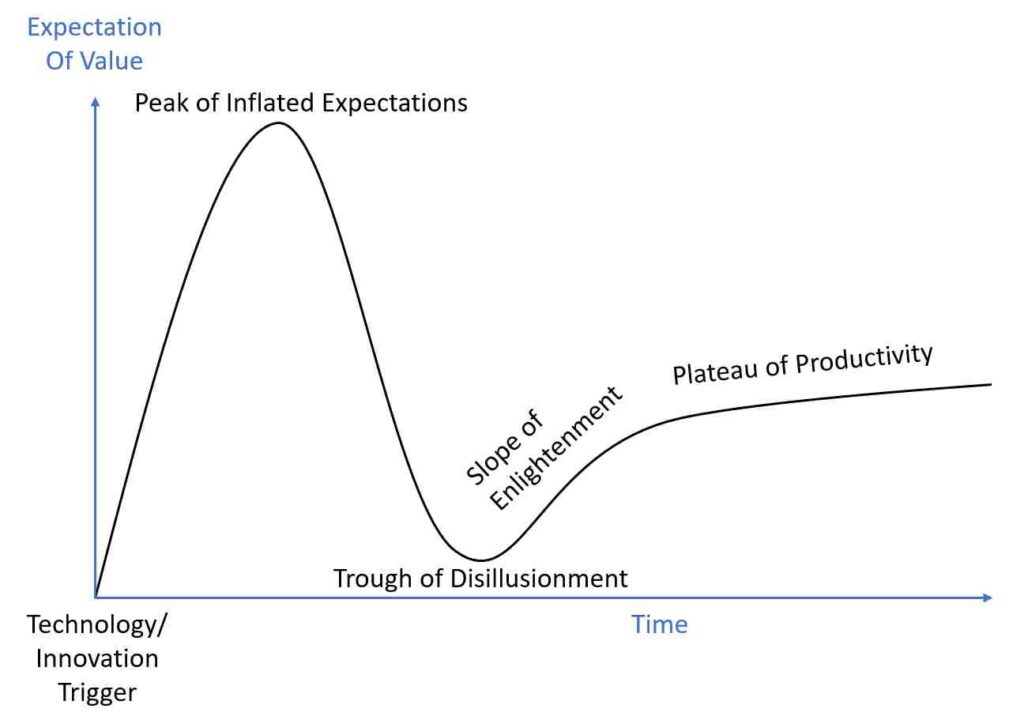The Rules of Online Visibility Are Changing Fast. With the Rise of Conversational AI Tools Like ChatGPT, Traditional SEO Strategies Are Losing Their Grip. Discover How Dynamic Conversations, Personalized AI Tools, and Smarter Content Strategies Can Position Your Business for Success in This New Era. The post How Conversational AI Is Changing the Rules of SEO first appeared on SteveBizBlog.
As a mentor to small business owners, one of the most common questions I hear is, “How can I make my website more SEO-friendly?” I’ve answered this question countless times, usually by discussing strategies like targeting keywords, improving backlinks, and optimizing metadata. For years, these practices worked well because they aligned with the algorithms used by search engines like Google. But lately, I’ve found myself revising my advice.
The rise of Generative AI tools—like OpenAI’s ChatGPT, Google’s Gemini, and Microsoft’s CoPilot—has turned the old rules on their head. Business owners who once depended on traditional SEO techniques now face a landscape where algorithms are no longer the gatekeepers. Conversations are.
Let me explain with an example.
From Search Queries to Conversations
Imagine someone is dealing with a slow-draining sink equipped with a garbage disposal. In the traditional search engine era, a user might type:
“How to fix a slow-running drain in my kitchen sink.”
The search results would include a mix of sponsored links for local plumbers and other links the user must sift through to find a relevant answer to their question. Often, these links lead to plumbers far from the user’s location, rendering the company’s search engine optimization (SEO) efforts irrelevant to attracting this specific user.
Frustrated with having to read through perhaps a dozen landing pages, the user might refine their search to something like:
“Plumber near me.”
This would generate another list of ranked businesses, prioritized based on factors such as having a Google Business Profile, cumulative reviews, and strategic use of keywords like “best plumber in Monument CO.”
Now, imagine that same person using a conversational AI tool like ChatGPT. Instead of performing a simple search, conversational AI engages the user in a conversation to troubleshoot the issue. For example, the user who understands prompt engineering might start with:
“Over the past few weeks, my garbage disposal has been taking longer to drain. Can you ask me questions one at a time, like a plumber would, to help me troubleshoot the issue?”
The conversational AI doesn’t offer a long list of businesses for the user to comb through. Nor does it spit out just answers. Instead, it begins by asking the user relevant questions, such as:
“Have you noticed whether the garbage disposal is making any unusual noises, such as grinding, humming, or clicking when you turn it on?”
This back-and-forth continues until the AI determines that the issue is likely a clog in the drain chamber and suggests calling a plumber familiar with your specific disposal model.
At this point, the user might ask:
“Can you recommend a Monument, Colorado plumber with experience fixing an InSinkErator Badger 5XP?”
Instead of providing a generic list of companies, the AI offers a tailored response, listing local plumbers along with their websites as well as a list of specific expertise in this disposal model and an explanation of why they might be a good choice.
Notice what’s happening here: interactions with conversational AI are highly contextual and personalized, focusing on direct answers rather than listing web pages. As more users shift from using traditional search engines to conversational AI tools, optimizing a landing page for keywords or owning a domain like “BestMonumentPlumber.com” may become less effective for visibility. Instead, conversational AI generates responses based on a combination of licensed data, human trainer input, and publicly available information. Unlike traditional search engines, these systems do not provide direct links to algorithm-selected landing pages or source materials from their training.
I have found that even if you request an AI chatbot to list its sources for verification purposes, the AI typically offers general guidance on where similar information might be found, such as academic journals, trusted news outlets, or official websites. While ChatGPT may sometimes provide links, these are often approximations that are not linked to the exact sources used during training. Furthermore, unlike Google, you cannot pay to be featured in AI-generated responses or to appear prominently on maps.
This shift—from static search queries to dynamic conversations—means businesses need to rethink how they create and present their content when it comes to marketing.
Why Traditional SEO is Losing Its Grip
For years, small businesses have lived and died by traditional SEO practices. Keywords, backlinks, and domain names were the currency of visibility. However, as AI chatbots gain popularity, many of these practices are losing relevance.
Exact match domain names—once the holy grail of SEO—are becoming obsolete. AI Chatbots don’t care whether your website is called “BestMonumentPlumber.com” or “SmithFamilyPlumbing.com.” They care whether you’ve provided clear, reliable, and helpful information.
And then there are the ranking hacks: hidden text, spammy backlinks, and other tricks that are used to game the system. AI chatbots don’t rely on these metrics. Instead, they focus on the quality of the information you provide.
Finally, let’s talk about the practice of keyword stuffing. In the past, businesses might cram their content with phrases like “best plumber in Monument” or include a list and full description of all the services they offer, never intended for humans to read, to rank higher on a Search Engine Results Page (SERP). But AI chatbots prioritize context over repetition. They’re looking for conversational language and meaningful answers, not robotic keyword density.
The Growing Momentum of Conversational AI
While the transition from traditional search engines to conversational AI as the primary tool for finding and interacting with businesses will not happen overnight, it is undeniably gaining momentum. As businesses increasingly explore AI-powered solutions, the shift is becoming more evident, and it’s critical for companies to start planning now.
A Personal Journey of Transformation
I know this firsthand because I have been on that journey myself. For years, I dedicated myself to writing a blog, producing content consistently, and optimizing it for SEO in the hope of driving traffic and growing my audience. I was laser-focused on keyword strategies, backlinks, and content creation, all in an attempt to outmaneuver the competitive landscape. Yet, despite my tireless efforts, traction remained elusive. No matter how much I poured into my blog, new resources like similar blogs and websites were being launched every day, increasing the competition. The sheer volume of options developing in my niche made me realize that I was stuck in an endless cycle of chasing traffic, expending tremendous energy just to maintain the status quo.
It was at this point that I began to reconsider my approach. I decided to step back and use first principles to re-examine my business. I took inventory of what I already had—my knowledge, experience, and the value I had been sharing through my blog—and questioned how I could leverage these assets in the context of a new paradigm: one dominated by conversational AI. I asked myself:
“If conversational AI will become the dominant method for finding and interacting with businesses, how can I adapt my business model to succeed in this future?”
The answer, I realized, was clear: doing more of the same would not work. The traditional methods of SEO, relying on ranking higher in search engine results, were no longer enough to capture and retain customer attention in a rapidly evolving digital landscape, as few users were turning to traditional search for answers. What was required was a paradigm shift. Instead of simply chasing rankings, I needed to embrace the new rules of the game, rules shaped by conversational AI. And most businesses need to do this as well if they hope to cross the chasm from search to conversational AI.
As I began to understand the drivers of this shift, the future of my business started to come into focus. Leveraging knowledge and leaning into the AI-driven world became key to staying relevant. The new business model that emerged from my reflection and research wasn’t about fighting for visibility in a crowded search engine. It was about positioning myself as a knowledgeable and trusted authority, accessible through AI-powered tools that customers could engage with directly. This was the direction I had to move in.
Embracing Dynamic Conversations Over Static Content
For many small businesses, the transition to conversational AI solutions requires the same mindset shift I went through. The days of simply optimizing for SEO and hoping to stay ahead of the competition are numbered. In a world where AI chatbots are poised to become the main interaction point, businesses must pivot, or they will be left behind. Developing and optimizing AI-powered tools has become my top priority and deserves your attention, too.
What I realized is that the future business landscape won’t be shaped by static websites or endless blog posts created to appease SEO algorithms. Instead, it will revolve around dynamic conversations powered by AI chatbots. Businesses that harness the power of conversational AI will be able to engage customers in more meaningful ways, building stronger relationships and providing solutions at the exact moment they’re needed. Ultimately, customers will reward these businesses with their loyalty and trust.
The transition from traditional search to conversational AI requires businesses to rethink how they connect with customers. This shift isn’t just about adopting new tools; it’s about becoming more valuable to your audience and finding innovative ways to serve their needs.
Reflecting on my journey, here’s how you can begin taking actionable steps to implement and maximize the value of conversational AI for your business.
Start With What Your Customers Really Want
Where should you begin? Start by addressing your customers’ most frequently asked questions. Consider the issues they regularly bring up or the problems they’re trying to solve. If you’re unsure where to start, tools like ChatGPT can help you brainstorm and organize a comprehensive list of potential questions.
Once you’ve got your FAQs, put them front and center on your website. Not only does this make it easy for people to get answers quickly, but it also shows that you truly understand their needs. Plus, here is a bonus: FAQs are exactly the kind of content AI tools love to consume. They’re clear, direct, and packed with the kind of information AI can use to generate helpful responses.
To take it a step further, make your FAQs conversational instead of overly formal. Think of them as a friendly chat with your customers rather than a dry list of answers. This not only makes your content more engaging for visitors but also aligns with how conversational AI works, by mimicking natural, human-like interactions. It’s a small change that can make a big difference in how customers see your business.
Build Something Smarter: A Custom GPT
Now, imagine taking your FAQ game to the next level. What if you could create an AI chatbot that doesn’t just answer those questions but is trained on your content, such as your blogs, guides, and case studies, and uses that knowledge to provide detailed and accurate responses? That’s where a custom GPT comes in.
This is easier to pull off than you might think. Train your custom GPT with all the content you’ve already created, and then add it to your website. There are plenty of videos on YouTube that can walk you step by step through this process. Now, instead of just reading through FAQs and other sources, your customers can interact with an AI chatbot that gives them personalized, helpful responses. It’s like having an assistant available 24/7 to make their experience seamless.
Go Even Bigger: Share Your Expertise with the World
Once you’ve got a custom GPT working for your website, why stop there? Think about creating a portable chatbot version of it that other businesses or platforms can use. For example, if you’re an expert in a specific niche, your chatbot could live on other websites, helping their visitors while also showcasing your knowledge.
This doesn’t just expand your reach; it turns you into a go-to resource. People will start to associate your brand with the answers they need, even if they aren’t actively looking for you.
Make It Personal
One of the best parts about conversational AI is that it can make every interaction feel personal. Use it to recommend products, services, or solutions tailored to your customers’ needs. For example, if someone asks your chatbot about a specific issue, it can suggest one of your products or services that perfectly matches their situation.
This kind of personalization shows that you’re paying attention and that you really care about helping your customers. It’s not just about automating tasks; it’s about creating an experience that feels human, even when it’s powered by AI.
Keep Evolving
The world of conversational AI is constantly changing, and that’s a good thing. It means there’s always a chance to make your tools better and more useful. Keep an eye on new features, test what works best for your customers, and don’t be afraid to adjust your approach as you go.
Shifting from the search-first model, which focuses on SEO, to conversational AI might feel like a big leap, but it’s really just about focusing on what matters most: being valuable to your customers. Start by answering their questions, build tools that make their lives easier, and keep improving along the way. With a little effort and the right mindset, you’ll be ready to thrive in a world that’s all about connection and conversation.
How is your business marketing evolving in a world dominated by conversational AI?
The post How Conversational AI Is Changing the Rules of SEO first appeared on SteveBizBlog.








